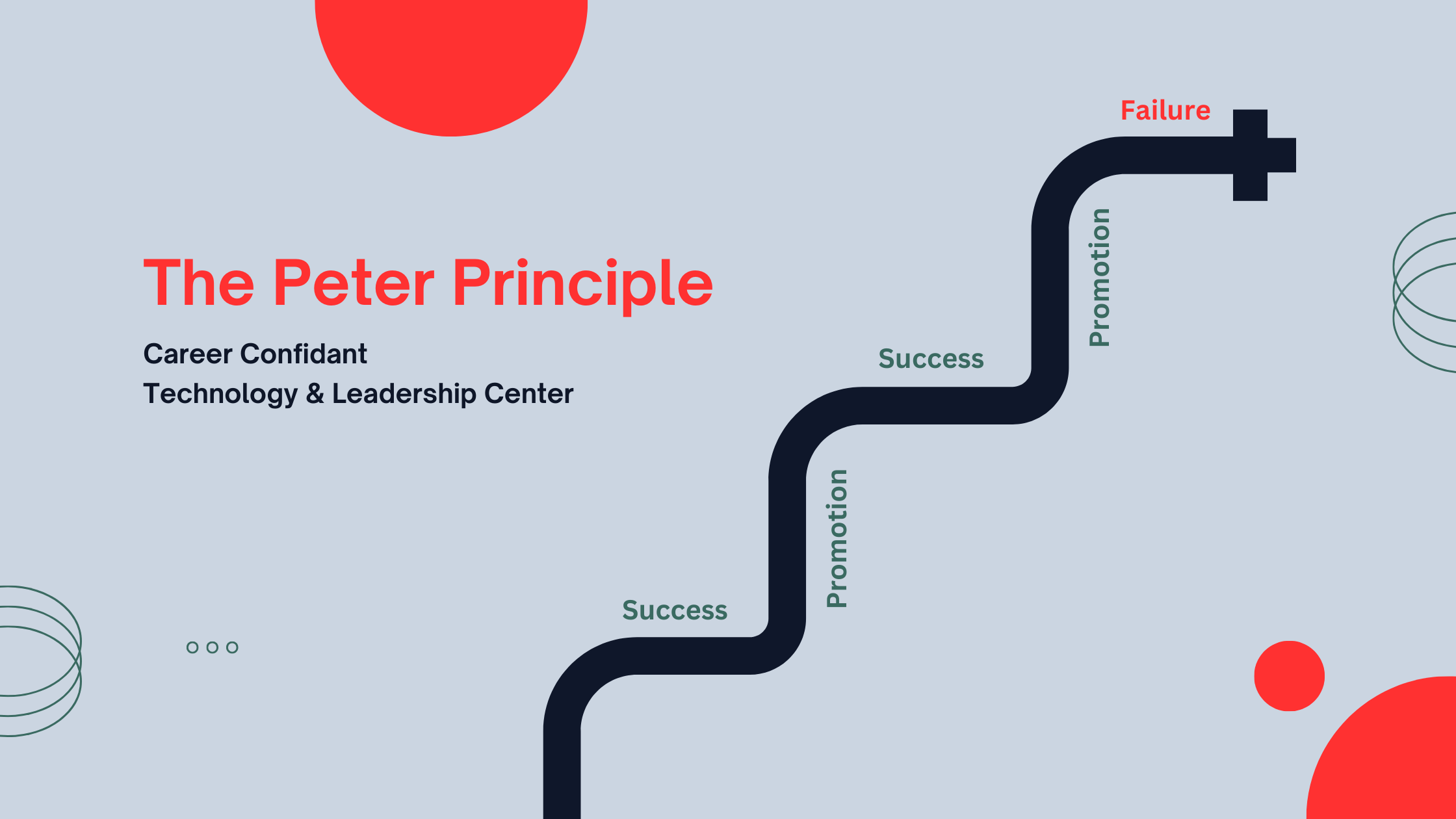The Peter Principle: Navigating Career Heights and Skill Gaps

Imagine standing at the entrance of your new office, proudly considering your new title. You worked hard to get this promotion, navigating the team dynamics and putting in extra hours and work to help your peers. Yet, alongside your feelings of excitement, there’s a hint of apprehension, a haunting question surfaces—are you confident that you possess the skills needed to be successful in this new role? With this thoughtful question, you have just encountered the Peter Principle.
Unraveling the Peter Principle:
First introduced in 1969 by Laurence J. Peter, the Peter Principle states that employees are promoted based on their success in previous jobs until they reach a level at which they are no longer competent, as skills in one job do not necessarily translate to another. While incompetence may seem like a harsh assessment, continual gaps with each climb up the career ladder may indicate an inability to thrive and qualify for promotion again.
Consider your professional journey as a game of Jenga. Removing a block from the base mirrors letting go of a skill that has contributed to your success in your current role. Placing that block on top symbolizes incorporating a new skill relevant to your upcoming position. Just like in Jenga, the key is to skillfully transition, ensuring your professional tower remains stable even as you exchange foundational elements for those better suited to your evolving challenges.
Strategies for Success:
-
Identify crucial skills for your role and future aspirations: Recent studies from the Institute of Professional Development show 82% of promoted managers feel inadequately prepared, highlighting the gap between skill set and higher position demands. Acknowledge that while uncertainties can be stumbling blocks, they are also opportunities for growth and adaptation. Take a targeted approach to skill development, focusing not only on current requirements but also anticipating the evolving needs of your next role.
-
A Commitment to Continuous Learning: Adopt an unwavering mindset. Stay ahead of industry trends by actively seeking out relevant leadership training, workshops, courses and mentorship programs. A commitment to lifelong learning ensures your skills remain not just current but also ahead of the curve.
-
Feedback as a North Star: Seek feedback regularly for insights. Studies show that 78% of managers actively seeking input have higher job satisfaction and are more likely to achieve their professional goals. Turn feedback into actionable steps by creating a personalized development plan. Regular check-ins with colleagues and superiors provide an ongoing source of valuable insights for continuous improvement.
-
Harness the Power of Mentorship: Engage in mentorship for accelerated career growth. Deloitte research indicates mentorship can play a crucial role in knowledge transfer, with 75% of executives believing it significantly contributes to sharing valuable institutional knowledge. Cultivate a diverse network of mentors to gain varied perspectives and insights. Beyond career advice, seek mentorship that extends to navigating organizational dynamics and decision-making processes.
Confronting the Peter Principle
If you’re struggling in your new role, or find yourself being overlooked for the next one, you might have personally encountered the Peter Principle; the skills that served you in previous positions are not the ones that will take you forward. Confronting this career issue is a challenge, not to be feared but met with resilience. Seize the opportunity to up-skill through continuous learning, personalized development and mentorship. Explore valuable resources and training programs that empower individuals in leadership roles, like those provided by WashU's Technology & Leadership Center. With the right strategies, one can overcome missteps, avoid pitfalls and thrive in a new role or upcoming role.
Author's Note:
This article represents a hybrid blog, a collaborative creation combining the creative content and personal experiences from our staff with the capabilities of AI language technology. The content aims to blend human-driven storytelling and AI-assisted precision, showcasing the potential synergy between human creativity and artificial intelligence in the realm of content creation.
Subscribe Here!

